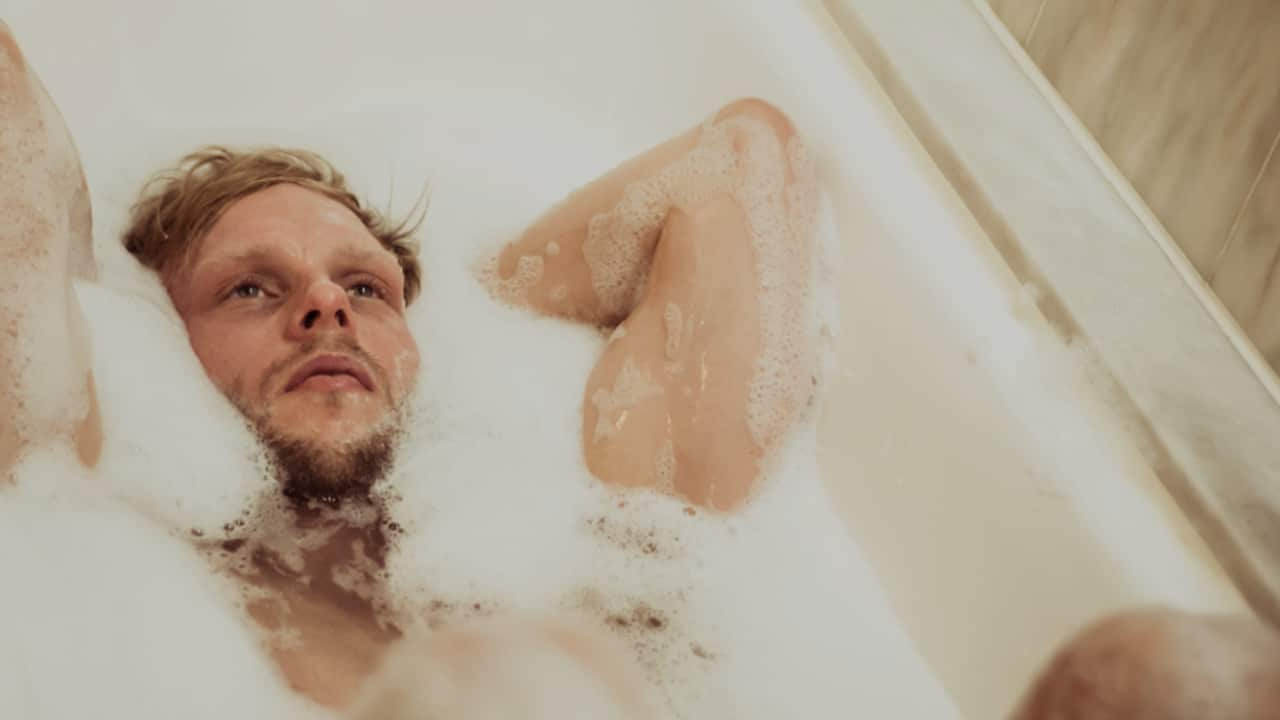Melbourne-based performance artist, dancer and choreographer Joel Bray, 38, is used to not quite fitting in.
A Wiradjuri man on his father’s side, he was raised by his white mother and step dad, both strict Pentecostal Christians. They lived first in Sydney, then moved on to Orange in country New South Wales.
At once drawn to but disconnected from his Indigenous roots, he chuckles as he acknowledges, “you’ve seen me, right? I look Swedish.”
His fair skin meant he also stood apart after ditching a law degree to pursue dance at the National Aboriginal Islander Skills Development Association (NAISDA), where it was easier to openly embrace the fact he was gay.
Not that that part of his identity was all that hidden, he says: “I was born queer,” he laughs again. “I think it’s a strength in the arts, and let me tell you my completely un-academic theory why.”
As Bray sees it, pre-coming out, queer kids learn to live two very distinct lives. The straight-passing one that helps navigate parental and peer expectation, “the good son, the boyfriend to the girls at school,” and the queer internal life. “On the inside you’re indulging your fantasies. When you watch a Disney film, it’s Prince Charming you’re looking at.”
It’s this dual life, he believes, that set him, and many queer kids in good stead for a future in performance.
On the inside you’re indulging your fantasies. When you watch a Disney film, it’s Prince Charming you’re looking at.
“You’re hard-wiring your brain and your nervous system, developing the ability to play something that’s not you,” he says.
Code switching may be second nature to Bray, but it hasn’t always been smooth sailing.
Breaking up with an Israeli partner after a ten-year relationship meant he had to leave that country, where he had been another sort of outsider as a gentile, and figure out what to do next, while struggling with undiagnosed bipolar disorder.
This “maelstrom period” forms the raw heart of his award-winning solo show Biladurang. The show is part of this year’s Sydney Festival line-up and performed in various states of undress to a handful of bathrobe-clad punters in a hotel room at Market Street’s QT, before returning to Melbourne in March for Dance Massive at the Collins Street Sofitel. It fuses spoken word recollections of Bray’s journey with stirring contemporary dance movements.
It was late in Biladurang’s development process that Bray recalled his Aboriginal grandmother telling him the creation story of the platypus (biladurang in Wiradjuri). The story seemed a perfect fit for his “mutant” identity.
“Blackfellas knew about it for thousands of years, but when the Europeans ‘discovered’ it, someone took a taxidermy platypus back and the scholars of the day said it was a hoax. They were like, ‘this animal can’t exist’.”
In some ways it is a drag show without drag.
He can relate. Told in non-chronological anecdotes, the story relays various events where Bray felt like a freak of nature. There’s his first awkward attempt at buying a gay porno in Orange, and the startling moment where a fellow student at university asked Bray how he knew he was Aboriginal, and he didn’t know how to answer.
But the key moment comes in the detritus-strewn rubble of a chemsex session in a hotel room somewhere in Europe that left Bray questioning everything. “What is the actual story here? Why are you doing this, taking drugs and having sex with all these men? It kind of precipitated the whole process of me going, ‘who am I? Am I supposed to be here? Who am I supposed to be?’”
In a much better place now, Bray says managing these identity crises has made him strong.
“My sexual and my racial identity and more, my hopes and dreams, all those things get tangled up together, and I make my art out of that tangle… you form your own community.”
“I’ve literally stood in the foyer after the show and seen perfect strangers who only just met turn to each other and ask, ‘would you like to go for a drink?’ That’s what I’m making this art for. It’s the most low-fi show ever, no bells and whistles, but getting people to hang out with each other is amazing, especially in an increasingly isolated digital world.”
Bray’s already developing a new work called Daddy that he’s not sure he’ll invite his parents to come see.
“It’s really exploring the type of sex that I like, the men I want to have sex with, and also that connection to country through my father,” he says. “I’m a bit scared, to be honest, but hopefully it’s delightful. There’s a lot of comedy in my work. I don’t want people to be scared. I want them to giggle.”
I suggest that that’s another core trait of queer performers - addressing dark material with deft humour, and Bray agrees.
“In some ways it is a drag show without drag.”
Joel Bray is performing at the until January 20, then at Melbourne's March 19-24.



